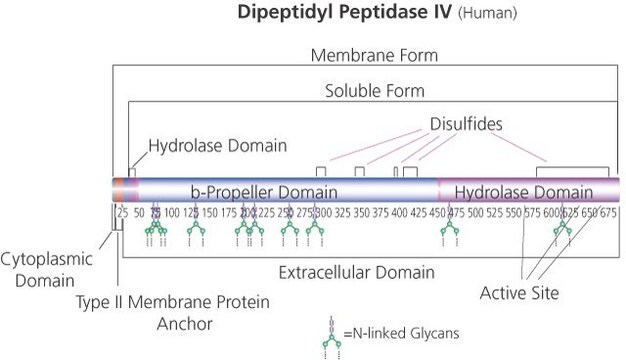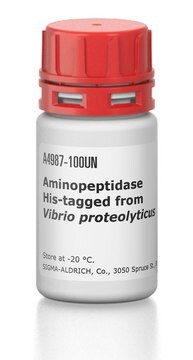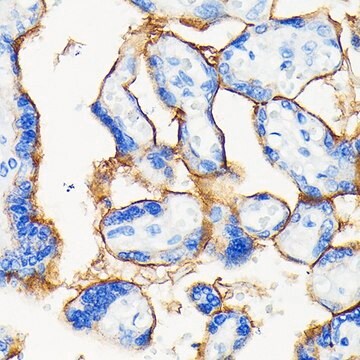Wichtige Dokumente
D3321
Dipeptidyl Peptidase VII human
recombinant, expressed in Sf9 cells
Synonym(e):
DPP7, Quiescent cell proline dipeptidase
About This Item
Empfohlene Produkte
Rekombinant
expressed in Sf9 cells
Qualitätsniveau
Form
solution
Spezifische Aktivität
≥1,500 units/μg protein
≥1500 units/μg protein
Mol-Gew.
89.1 kDa
Relevante Krankheit(en)
diabetes; cardiovascular diseases
Versandbedingung
dry ice
Lagertemp.
−70°C
Anwendung
Biochem./physiol. Wirkung
Physikalische Eigenschaften
Einheitendefinition
Physikalische Form
Signalwort
Danger
H-Sätze
Gefahreneinstufungen
Eye Dam. 1 - Repr. 1B - Skin Corr. 1C
Lagerklassenschlüssel
6.1C - Combustible acute toxic Cat.3 / toxic compounds or compounds which causing chronic effects
WGK
WGK 2
Analysenzertifikate (COA)
Suchen Sie nach Analysenzertifikate (COA), indem Sie die Lot-/Chargennummer des Produkts eingeben. Lot- und Chargennummern sind auf dem Produktetikett hinter den Wörtern ‘Lot’ oder ‘Batch’ (Lot oder Charge) zu finden.
Besitzen Sie dieses Produkt bereits?
In der Dokumentenbibliothek finden Sie die Dokumentation zu den Produkten, die Sie kürzlich erworben haben.
Unser Team von Wissenschaftlern verfügt über Erfahrung in allen Forschungsbereichen einschließlich Life Science, Materialwissenschaften, chemischer Synthese, Chromatographie, Analytik und vielen mehr..
Setzen Sie sich mit dem technischen Dienst in Verbindung.









